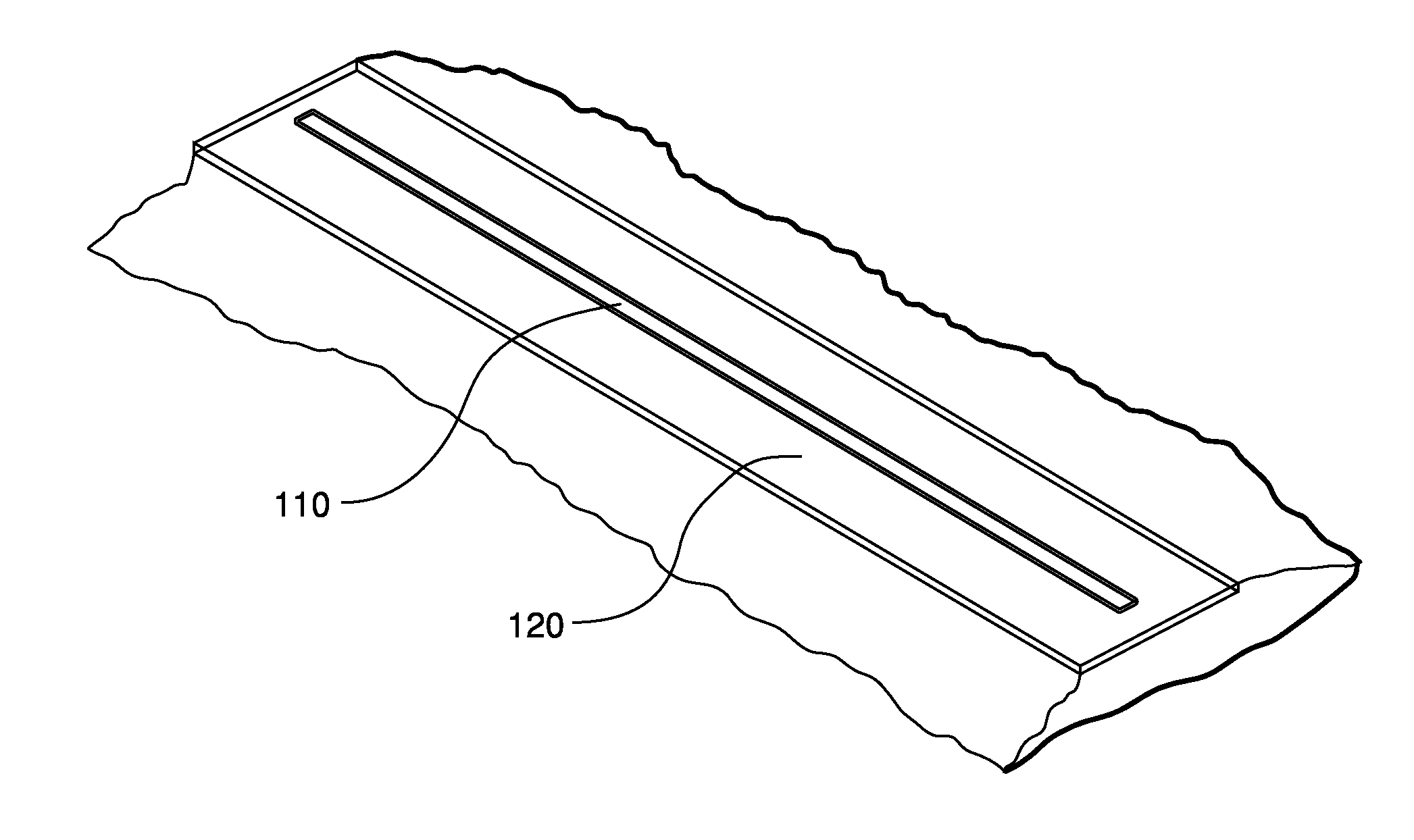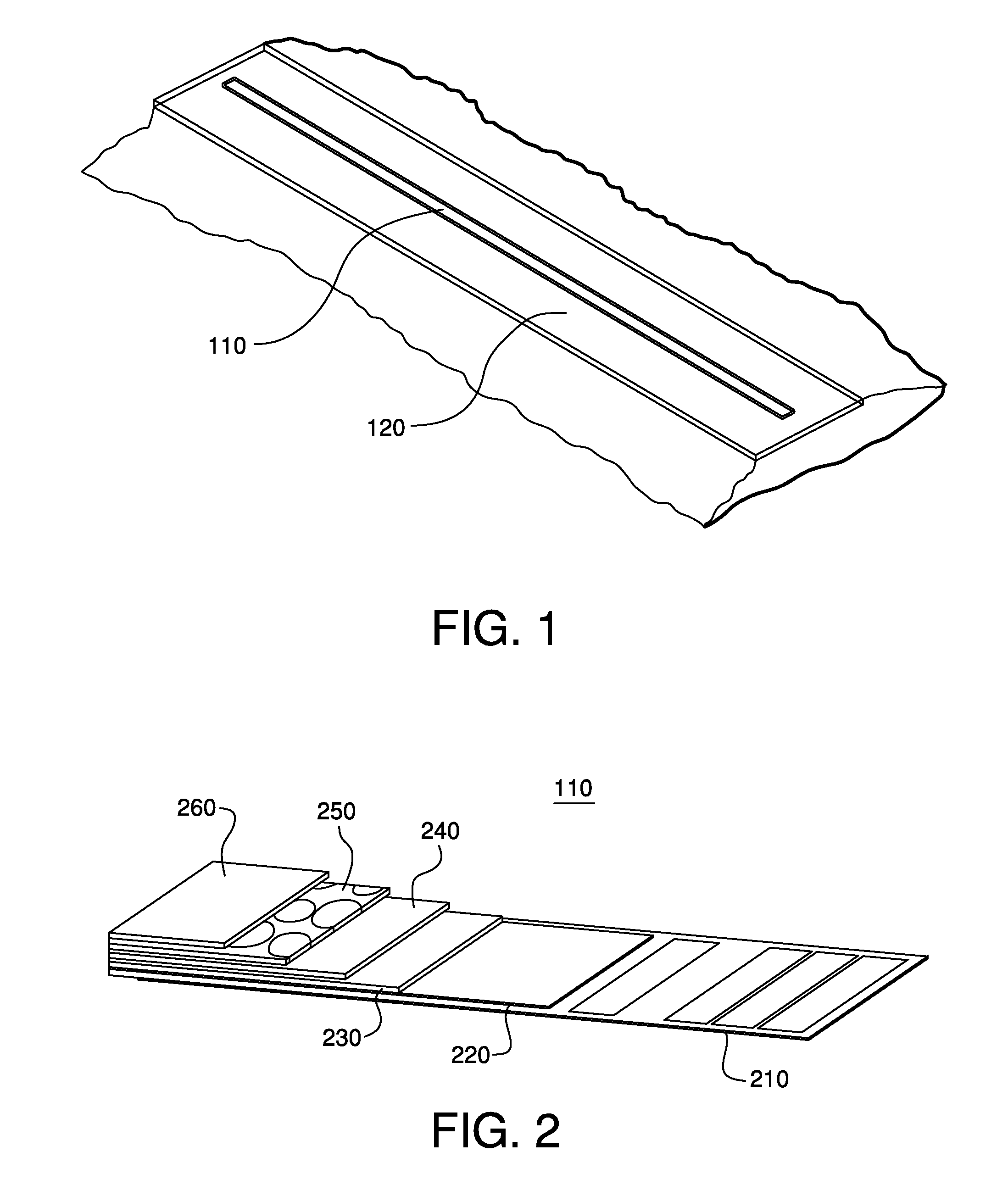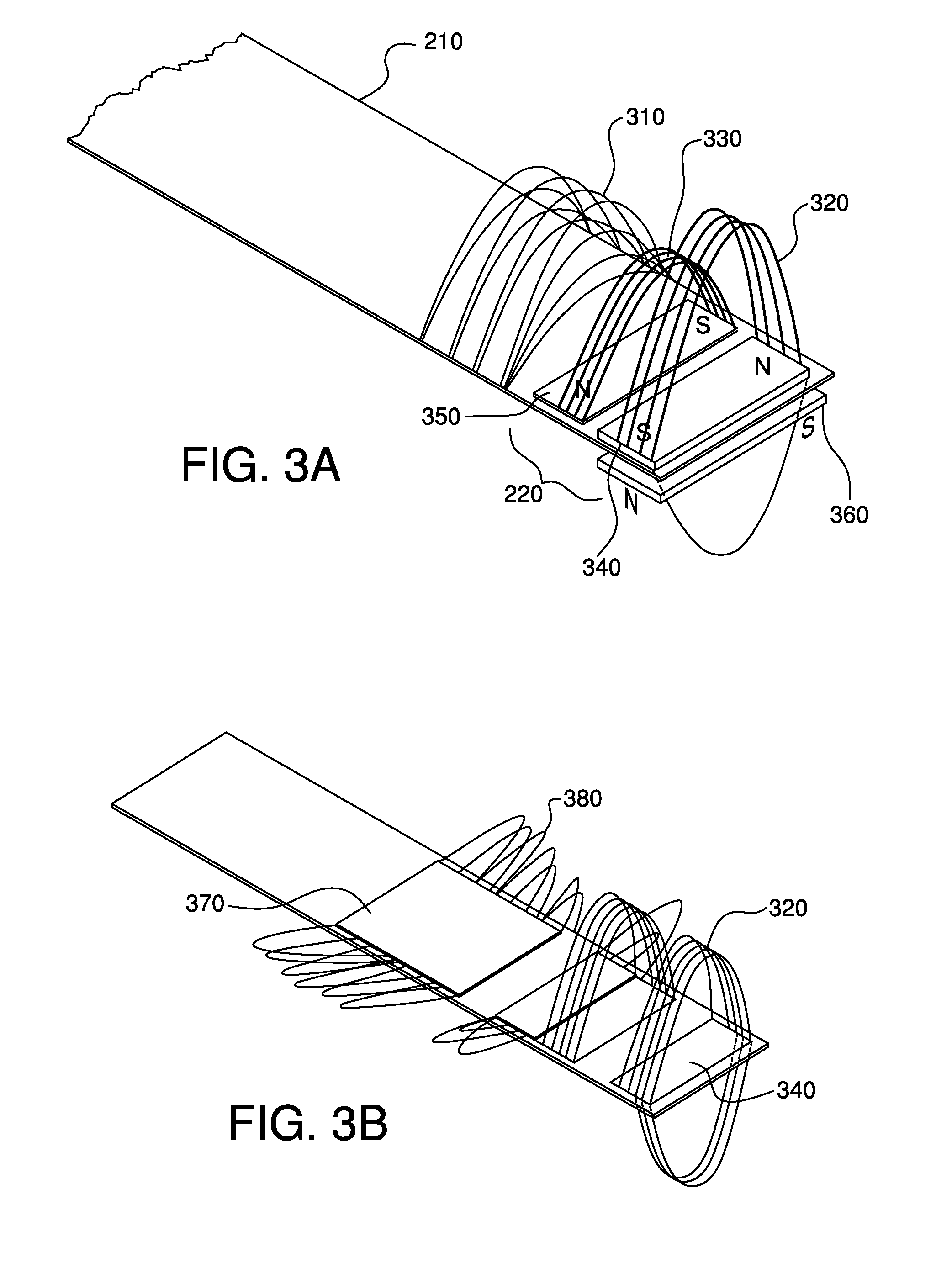Multiple layer solar energy harvesting composition and method, solar energy harvesting buckyball, inductive coupling device; vehicle chassis; atmospheric intake hydrogen motor; electrical energy generating tire; and mechanical energy harvesting device
a solar energy and composition technology, applied in the direction of rail devices, machines/engines, climate sustainability, etc., can solve the problems of large land area, inability to meet the needs of large areas, and the best solar cells are only about 20% efficient at conversion
- Summary
- Abstract
- Description
- Claims
- Application Information
AI Technical Summary
Problems solved by technology
Method used
Image
Examples
first exemplary embodiment
of a Method of Application of a Solar Energy Harvesting Composition
[0104]In another exemplary embodiment of the present invention, the solar energy harvesting strip comprises a solar energy harvesting composition for use with an applicator to spray apply the layers of the solar energy harvesting composition on a driving surface. The solar energy harvesting composition comprises about 10% to about 20% rubber type adhesive to act as bonding agent between the driving surface and subsequent applications, about 20% to about 60% magnetic material, about 20% to about 40% specially prepared solid state junction diodes, a conduction material where used comprise about 20% to about 30% graphite / epoxy and about 20% to about 30% of a metallic conductor such as Aluminum Dioxide. The film is then sealed by a type of transparent material, such as a transparent TEFLON material. These layers can be configured and arranged in a number of manners. For example, a permanent magnet rubber bonding strip ca...
second exemplary embodiment
of a Method of Application of a Solar Energy Harvesting Composition
[0105]Use of an apparatus such as the one disclosed in U.S. Pat. No. 5,605,251 of Retti entitled “Pulseless Pump Apparatus”, the entire disclosure of which is incorporated herein by reference, is preferable for applying the chemical coating of yet another embodiment of the present invention, in three somewhat simultaneous overcoatings. In the first application, a rubber-based, asphalt cement which combines permanently magnetized material, preferably about 75% magnetic material to about 25% cement, is applied to the surface providing electrical insulation as well as a bonding agent for the subsequent overcoatings. In a somewhat simultaneous application, graphite, preferably in a solution of 65% graphite 65%, and 35% epoxy or ACC (superglue), is applied to the bonding agent in two separate but parallel lines to form conductors representing the positive and negative leads in a circuit. In the third application of materi...
PUM
 Login to View More
Login to View More Abstract
Description
Claims
Application Information
 Login to View More
Login to View More - R&D
- Intellectual Property
- Life Sciences
- Materials
- Tech Scout
- Unparalleled Data Quality
- Higher Quality Content
- 60% Fewer Hallucinations
Browse by: Latest US Patents, China's latest patents, Technical Efficacy Thesaurus, Application Domain, Technology Topic, Popular Technical Reports.
© 2025 PatSnap. All rights reserved.Legal|Privacy policy|Modern Slavery Act Transparency Statement|Sitemap|About US| Contact US: help@patsnap.com



